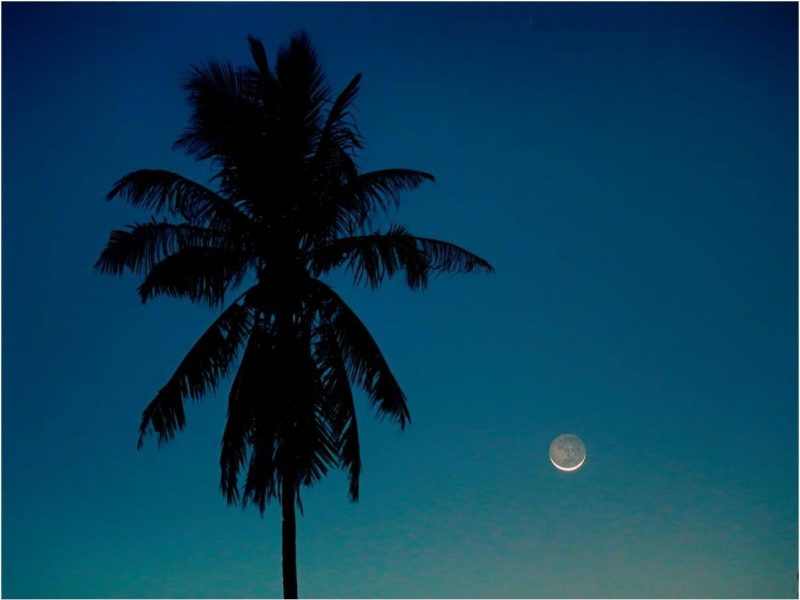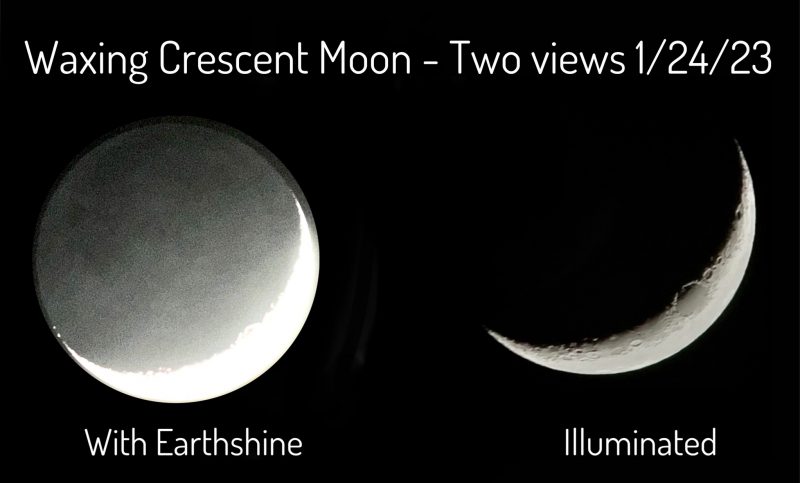
To look for earthshine, watch for a slim crescent moon
If you want to see a moon with earthshine, look for a thin crescent moon the few days before and after new moon. And when you see a crescent moon shortly after sunset or before sunrise, you can sometimes see not only the bright crescent of the moon, but also the rest of the moon as a dark disk. That pale glow on the unlit part of a crescent moon is light reflected from Earth. It’s called earthshine.
To learn when the next new moon is, check our visible planet and night sky guide. Then, a for few days before the new moon, look for a thin crescent moon in the east before dawn. And after the new moon, watch for few days to catch the slim crescent moon in the west after sunset.
What is earthshine?
To understand earthshine, remember that the moon is a globe, just as Earth is, and moreover that the globe of the moon is always half-illuminated by sunlight just like Earth. When we see a crescent moon in the west after sunset, or in the east before dawn, we’re seeing just a sliver of the moon’s lighted half.
Now think about seeing a full moon from Earth’s surface. Bright moonlight can illuminate an earthly landscape on nights when the moon is full.
Likewise, whenever we see a crescent moon, a nearly full Earth appears in the moon’s night sky. The full Earth illuminates the lunar landscape. And that is earthshine. It’s light from the nearly full Earth shining on the moon.
So the next time you see a crescent moon, expand your thinking to include the Earth under your feet.
See the glow on the unlit portion of the moon for what it really is, sunlight reflected from the nearly full Earth shining in the moon’s sky.

Enjoying EarthSky? Sign up for our free daily newsletter today!
Bottom line: Earthshine, or the dim glow on the darkened portion of a crescent moon, is light from Earth shining on the night side of the moon. Watch for earthshine on the thin crescent moon visible for several days before and after a new moon.
Read more: What’s the youngest moon you can see with the eye alone?











